How to Create Your Signature Coaching Program: 4 Templates
 A signature coaching program supports multiple clients’ performance and development needs, promoting growth and change (Ribbers & Waringa, 2015).
A signature coaching program supports multiple clients’ performance and development needs, promoting growth and change (Ribbers & Waringa, 2015).
The challenge for designers is to produce powerful coaching programs they can tailor to meet the demands of a growing audience, add value to clients’ lives, and be recognizable as supporting them to get along and get ahead (Hogan, 2004).
Programs must be built with the individual, group, and organization in mind, supporting anticipated change and development needs that lead to agreed outcomes (Kanatouri, 2020).
This article explores how to create your signature coaching program as a part of a successful and growing business and includes several templates and outlines that will help.
Before you continue, we thought you might like to download our three Positive Psychology Exercises for free. These science-based exercises will explore fundamental aspects of positive psychology including strengths, values, and self-compassion, and will give you the tools to enhance the wellbeing of your clients, students, or employees.
This Article Contains:
How to Create Your Coaching Program 101
The International Coaching Community (n.d.) describes coaching as unlocking a person’s potential, maximizing their performance, and helping them learn rather than teaching them. A well-thought-out coaching program does the following:
- Helps a person change in the way they want, traveling in the direction of their goals
- Supports a person (at all levels) on their journey to who/where they want to be
- Builds awareness that empowers choice and leads to change
An appropriate and tailored coaching program can “effectively support individuals’ and groups’ positive change and development in the contexts of work, career, or personal life” (Kanatouri, 2020, p. 10).
Cutting-edge online coaching software such as Quenza can digitize and automate coaching practices and programs, offering improved services at scale.
While the fundamental principles of coaching remain the same, such powerful, dedicated coaching software makes it possible to deliver targeted, personalized coaching services specific to the needs of individuals, groups of clients, and organizations (Kamphorst, 2017; Ribbers & Waringa, 2015).
Yet health professionals must remember that “coaching is a partnership between coach and client” (International Coaching Community, n.d.).
Dee Hutchinson (2021), coach and three-time Amazon bestselling author, advocates the co-creation approach to building coaching programs. And it makes good sense. The benefits of building programs through engaging both the designer and the client, especially using Quenza’s intuitive design platform, include the following:
- They meet the needs of the organization and the learner or client.
- They empower the client through a shared responsibility for their development.
- The material is more practical. It becomes relevant to the client’s environment and needs.
- A coaching program, especially an online one, can be launched and scaled quickly.
- It offers a reduced financial investment, yet bespoke designs.
It is crucial that coaching is targeted appropriately to the client as a learner. Between 60% and 90% of training is “either forgotten, not entirely understood, or will never be applied on the job” (Hutchinson, 2021, p. 22).
Coaching may be able to work well if traditional training is performing poorly. Development preferences are changing; people prefer to be engaged in their training and growth, pulling instead of pushing learning (Hutchinson, 2021).
How do I create my signature coaching program?
Hutchinson (2021) suggests a multi-step co-creation process that ensures that coaching programs are designed with the client firmly in mind. The following eight steps establish coaching as a valuable learning experience.
1. Capture and describe the problems to be solved.
Your client must understand the problem you are solving or the need you are addressing. For example:
I am struggling to balance work and home life.
I have goals for my life but am unclear how to reach them.
If coaching is for a corporate client, you may have the delicate balance of meeting the needs of both the organization and employee. This requires capturing both employer and employee problem statements.
2. Identify the skills required to solve the problem.
Once the problems have been identified, you must specify the skills needed by the client to solve them. For example, they may need to develop self-care, time management, or boundary-setting skills.
3. Get inside the head of your clients.
“Knowing your audience is absolutely crucial if you want to create a program that people will actually value and engage in” (Hutchinson, 2021, p. 48). When putting together your signature coaching program, your focus must be on the client.
What have they tried that has and hasn’t worked?
What do they want to achieve the most?
Most importantly, get post-session feedback. Feedback forms are simple to create in Quenza, and you can review the results online.
4. Put together an initial skills list.
Identify a set of skills and begin to form the structure and content of your coaching program. However, you may still miss vital elements that neither you nor your clients have considered.
5. Conduct external research.
Perform additional online searches for related topics, and complete your list of skills to help your clients overcome their obstacles and live more complete lives.
6. Prioritize and group the skills.
Take the skills list, prioritize, and logically group the skills into related topics; this is crucial for designing a smooth coaching journey.
Within Quenza, it is possible to create pathways to coach clients on a particular theme or subject or with a specific aim in mind. For example, a resilience journey may include coping and stress management skills and visualization exercises.
You can remove unnecessary elements or make aspects of the coaching optional through prioritizing.
7. Outline high-level learning pathways.
The skill groups naturally lead to the development of high-level coaching activities (or pathways) that facilitate change, growth, or development in a particular area.
8. Brainstorm and finalize the learning paths.
The coach can now set out the care pathway in an appropriate order for the client. They will take into account where they need to begin their coaching journey and how to progress.
For example, coaching may begin with focusing on where the client is in their lives at present and then where they see themselves in the future.
This step logically leads into a process of goal setting.
Throughout the design and build of your signature coaching program, it is essential to consider whether each activity is absolutely necessary, maintaining clarity and avoiding diluting the coaching experience.
Structuring Your Coaching Program: 2 Examples
The following two examples identify different and yet complementary approaches for structuring your coaching programs while targeting the needs of the client.
They work equally well for face-to-face, online coaching, or blended coaching and learning experiences.
Using problem statements to build a resilience coaching program
Dee Hutchinson (2021) gives the example of a coaching program for resilience at work.
The employee problem statement upon which the following coaching program was based was:
- I feel worn out.
- I am struggling to balance multiple roles.
- I am working too many hours.
- I am no longer connected to what I am doing or my team.
The organizational problem statement set by Hutchinson’s customer that had tasked the employee with creating a coaching program was how to help their employees:
- Stay productive when working from home
- Balance working hours
- Support remote teamwork
- Manage stress
Based on the problem statements and working through the earlier coaching steps, Hutchinson (2021) produced an asset that captures the activities that together form the resilience program structure.
| Section description | Activities (Sample) |
|---|---|
| 1. Importance of self-care (physical and mental wellbeing) | Identify and measure:
|
| 2. Time management and organizational skills |
|
| 3. Stress management |
|
| 4. Building resilience in your team |
|
| 5. Communication skills |
|
| 6. Your resilience blueprint |
|
Engage with the customer or client early and often to ensure that all development work adds value to the overall signature coaching program and does not lead to wasted time or resources (Ries, 2019).
It is easy to create individualized feedback forms in Quenza and incorporate feedback questionnaires within each self-care pathway that provide valuable input into future refinement or development.
Using the ABC model for sustained behavioral change
Anne Ribbers and Alexander Waringa (2015) suggest using an accelerated behavioral change (ABC) model for structuring e-coaching sessions.
There are three parts to the ABC model that guide fast, enduring behavioral change and direct the development of the coaching program.
- Analyze
“Formulate realistic, relevant, and achievable goals” based on the current and desired situation (Ribbers & Waringa, 2015, p. 47). - Internalize
This is where the clients work on achieving the goals. Each goal is split into smaller goals that can be realized through a series of baby steps that receive continuous positive feedback, resulting in more successes. - Sustain
The aim is to ensure that the changes are sustainable and endure into the future. Without it, behavior can revert to pre-intervention, and any gains are lost.
Several crucial process elements support the client in behavioral change and should be factored into the coaching program.
- Awareness
Along the journey, the client must develop an increasing degree of self-awareness. Such insight is essential to the personal development process and relies on reflecting on external stimuli and mental processes (Ribbers & Waringa, 2015). - Feedback
The client must be able to share feedback about their experiences and behavior. It enables self-reflection and input to the change process. - Knowledge transfer
Knowledge and psychoeducation shared in a structured way can support self-awareness, self-reflection, and the acquisition of new skills.
A coaching program designed to facilitate the building, internalizing, and persistence of new behavior supported by the above elements, has a good chance of offering clients successful and lasting support (Ribbers & Waringa, 2015).
4 Useful Coaching Program Templates [PDFs]
Quenza offers an easy-to-use and intuitive drag-and-drop function to create automated messages, questionnaires, and worksheets. The client can complete them to provide feedback or gain insight into the developing coaching program.
The following simple yet effective templates are helpful in various stages within the development lifecycle of your signature coaching program.
Checklist for building a coaching program
There are many ways to build a coaching program. Each approach has its strengths and valuable coaching techniques appropriate to the specific behavioral change or intended outcome.
Use the Checklist for Building a Coaching Program to see if you are considering everything when creating your signature coaching program.
Capture the problem statement
Understanding and capturing the problem statement is crucial to identifying the client’s needs (whether an individual, organization, or both).
The coach can refer back to the problem statement during and after the development of the coaching program to ensure they develop an appropriate solution (Hutchinson, 2021).
Capturing the Problem Statement identifies problem statements for multiple clients. Once coaches have a collection of their clients’ problem statements, they can synthesize this information into a vision statement that describes their signature coaching program (modified from Sheldon, n.d.).
“I help [target market] go from [starting pain point or need] to [end point or goal] by [solution].”
For example, it could be:
I help busy people go from working hard with no clear direction to becoming focused by co-creating clear goals and developing the mental toolkit to provide the support needed.
Online feedback request form
While it is possible to request feedback via email, avoid feedback being swallowed up in a busy inbox by using a form within a dedicated coaching software tool, such as Quenza. Quenza also enables the client’s name to be automatically pre-filled in the form or message.
The Online Feedback Form Template provides a suggested message that can be modified as required.
Coaching program blueprint
Outlining your program content is incredibly valuable. Not only does it challenge you to build something appropriate for your client, but equally important, it is an asset that can be shared (possibly in different formats) with potential or existing clients (Hutchinson, 2021).
The Coaching Program Blueprint is a simple tool for collecting and displaying all the activities or lessons in the coaching program in a structured way.
When sharing the coaching blueprint with potential clients, it is helpful to consider whether you are grabbing their attention, generating interest in the program, building their desire to participate, and getting them ready to take action.
How to create your first signature coaching program
2 Coaching Program Outlines to Get Inspired
Many coaching programs offer help across all aspects of life, from careers and relationships, to achieving life goals. Each varies in the techniques, medium, tools, and support given to the individual, couple, or group.
Two examples of specific coaching programs include the following.
Coaching in stress management
Joe Robinson, a stress management coach, offers coaching services to help people manage their stress through teaching them the following skills:
- Managing pressure, deadlines, difficult people, and overwhelm
- Separating yourself from your thoughts
- Setting boundaries and speaking up
- Catching yourself when stress goes off and turning it off
- Avoiding thinking traps and catastrophizing
- Controlling anxiety with coaching, and sleeping better
- Building resilience to manage any challenge
- Leaving work at work with work recovery strategies
Robinson’s program explains how it is possible through coaching to learn how to manage stress and avoid hanging on to it long after the triggering event has passed.
Coaching in resilience
The Resiliency Solution provides several coaching programs aimed at building resilience. Their seven-day elite program covers the following:
Day 1 – Resiliency framework
Day 2 – Becoming resilient: Finding yourself
Day 3 – Becoming resilient: Time to regulate
Day 4 – Professional resiliency: Importance of creativity
Day 5 – Professional resiliency: Lead with what you are good at
Day 6 – Professional sustainability: We all need someone sometime
Day 7 – Professional sustainability: Expecting good things
The program is online and self-paced so that you control when you start and finish.
Ultimately, the format and design of your signature coaching program should be determined by the needs of the actual and potential users.
Using Quenza to Launch Your Coaching Program
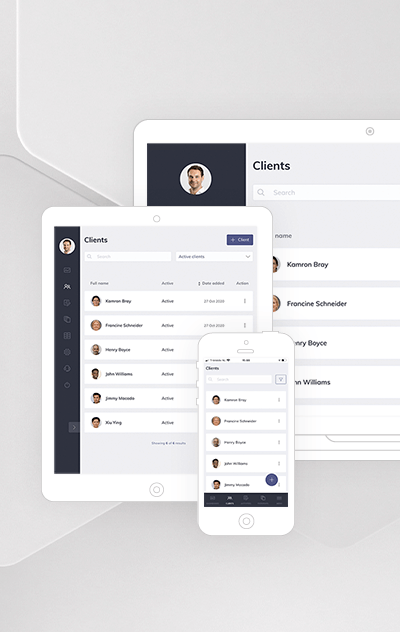
While this positively affects your capacity to scale your practice, it also frees precious resources to enhance your offering to existing clients.
Coaching programs can be designed, built, refined, copied, and shared within one dedicated coaching platform.
This functionality gives coaches the chance to provide highly consistent, reliable, and specific coaching experiences to individuals and also the potential to do online group coaching.
Other clear benefits to using Quenza to launch your signature coaching program include the following:
- Reducing the overhead from manually managing record keeping.
- The capacity to keep clients motivated and engaged through focused and tailored interventions in a dedicated, clean environment.
- Each care pathway can be taken as-is, tailored from an existing resource library, or created using dedicated design tools.
- Your client base is maintained digitally. The coach can add customers at any time, and the business can be scaled in a controlled and manageable way, with interventions scheduled and shared individually or to groups.
- The coach can monitor the client’s progress in real time, offering assistance when most needed.
One of the key benefits of Quenza is its ability to provide help and regular interaction outside of standard session times through chat functionality and sending targeted positive psychology interventions.
Both coach and client can interact on the go on any Wi-Fi-enabled device.
A Take-Home Message
A well-put-together and professionally delivered coaching program taps into the individual’s “implicit knowledge to create impactful and powerful learning experiences” (Hutchinson, 2021, p. 31).
Where possible, like other company assets, you should create your signature coaching program through regular and early feedback from potential clients to ensure that their needs are met and that design and build resources are not wasted.
A well-designed program should provide your clients with an opportunity to see the best of what you have to offer, capturing your potential to coach them in the direction they wish to develop.
Using a tool like Quenza, it is possible to create, copy, and tailor coaching programs quickly and effectively. With a drag-and-drop interface and the powerful Activity Builder, journeys can be crafted responsively to client needs and promote engagement and growth.
Designing and building general and targeted care pathways will promote your coaching business and meet changing needs in response to new demands. Customers will receive high-quality, well-designed coaching that is intuitive and life enhancing.
Why not try out the Quenza trial for $1 and see how you can promote regular and ongoing knowledge sharing by building your own signature coaching program?
We hope you enjoyed reading this article. Don’t forget to download our three Positive Psychology Exercises for free.
- Hogan, R. (2004). Personality psychology for organizational researchers. In B. Schneider & D. B. Smith (Eds.), Personality and organizations (pp. 3–23). Lawrence Erlbaum Associates.
- Hutchinson, D. (2021). How to build an online coaching program: Re-imagine instructional design to create impactful, engaging, and scalable learning experiences in a corporate setting (Reimagined Learning Book 1). Author.
- International Coaching Community. (n.d.). What is coaching? Retrieved May 31, 2021, from https://internationalcoachingcommunity.com/what-is-coaching/
- Kamphorst, B. (2017). E-coaching systems. Personal and Ubiquitous Computing, 21, 625–632.
- Kanatouri, S. (2020). The digital coach. Routledge.
- Ribbers, A., & Waringa, A. (2015). E-coaching: Theory and practice for a new online approach to coaching. Routledge.
- Ries, E. (2019). The lean startup: How constant innovation creates radically successful businesses. Portfolio Penguin.
- Sheldon, S. (n.d.). How to create your online group coaching program: Guide & checklist. Content Sparks. Retrieved June 23, 2021, from https://contentsparks.com/55507/create-your-online-group-coaching-program/
Let us know your thoughts
Read other articles by their category
- Body & Brain (49)
- Coaching & Application (57)
- Compassion (26)
- Counseling (51)
- Emotional Intelligence (24)
- Gratitude (18)
- Grief & Bereavement (21)
- Happiness & SWB (40)
- Meaning & Values (26)
- Meditation (20)
- Mindfulness (45)
- Motivation & Goals (45)
- Optimism & Mindset (34)
- Positive CBT (28)
- Positive Communication (20)
- Positive Education (47)
- Positive Emotions (32)
- Positive Leadership (18)
- Positive Parenting (4)
- Positive Psychology (33)
- Positive Workplace (37)
- Productivity (17)
- Relationships (46)
- Resilience & Coping (36)
- Self Awareness (21)
- Self Esteem (38)
- Strengths & Virtues (32)
- Stress & Burnout Prevention (34)
- Theory & Books (46)
- Therapy Exercises (37)
- Types of Therapy (64)
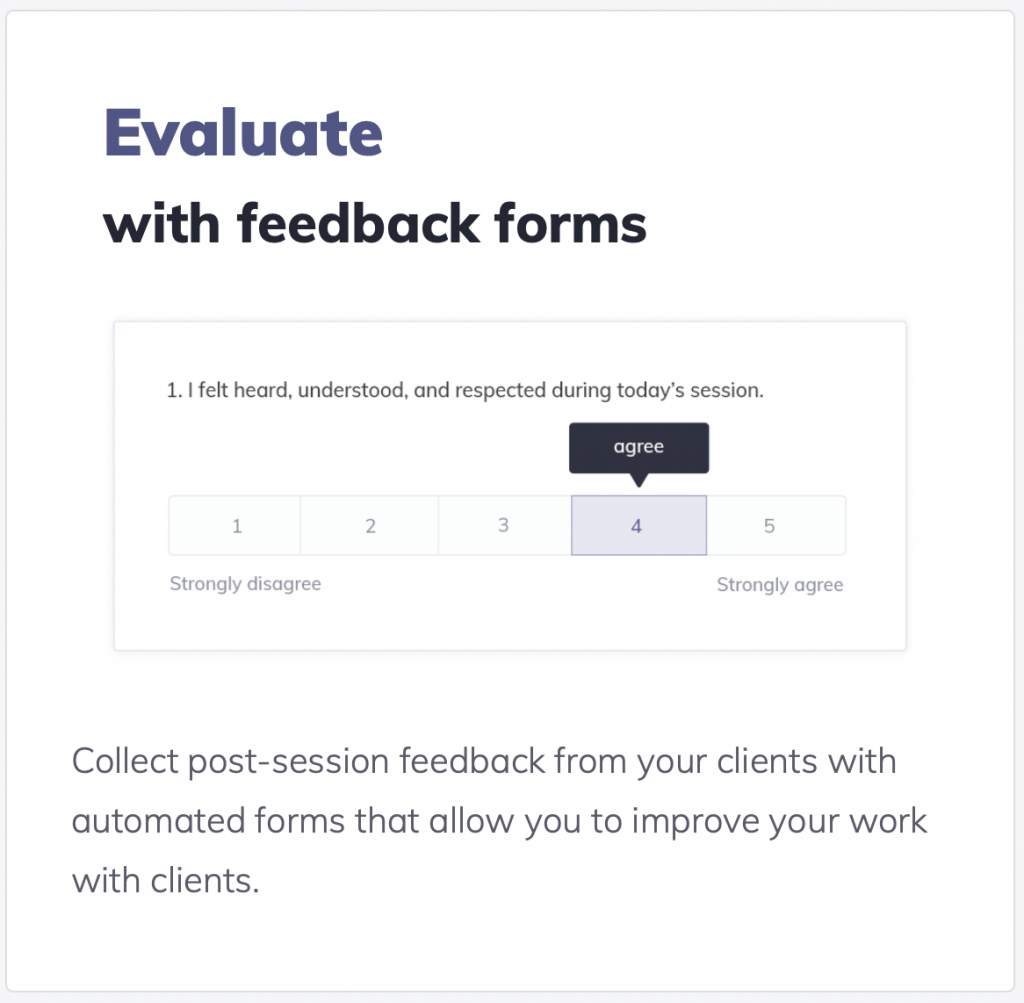
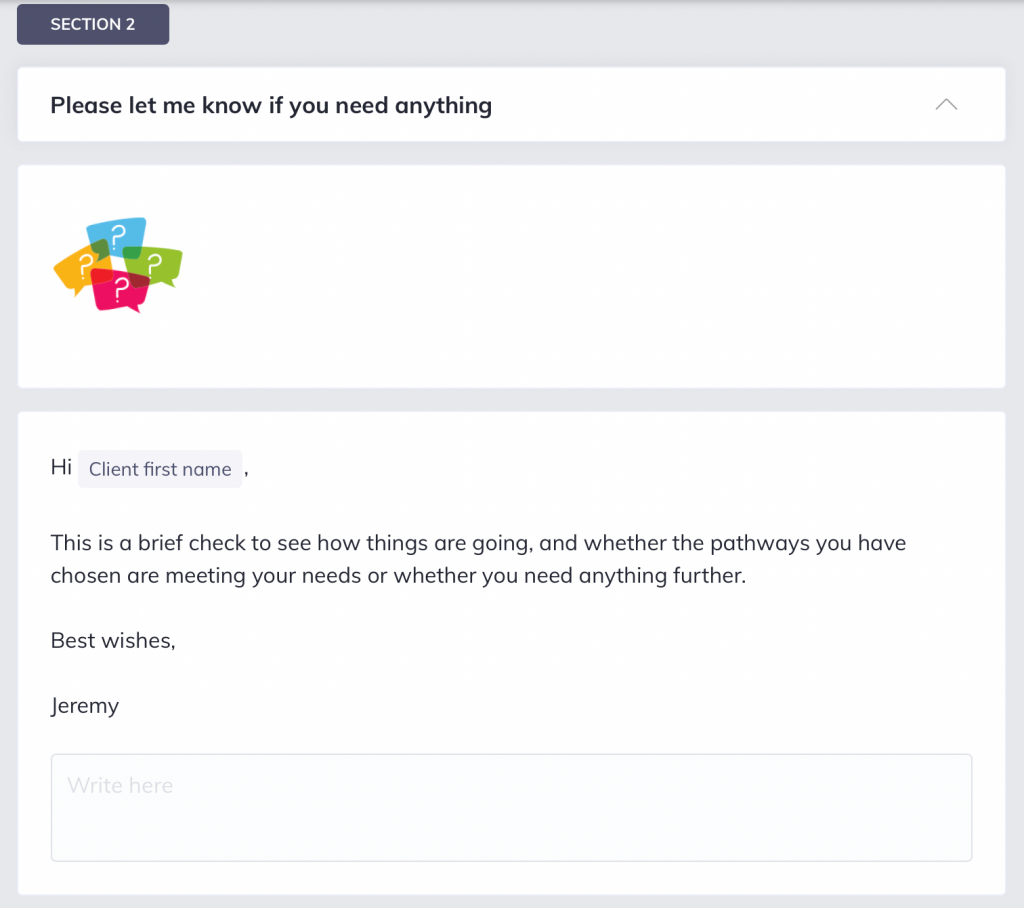
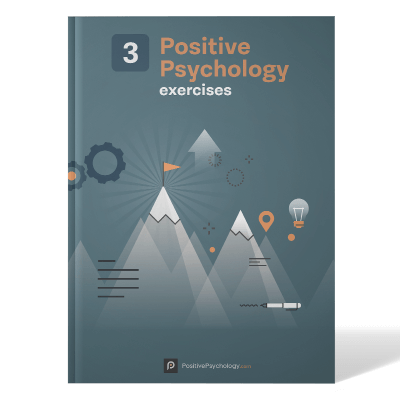
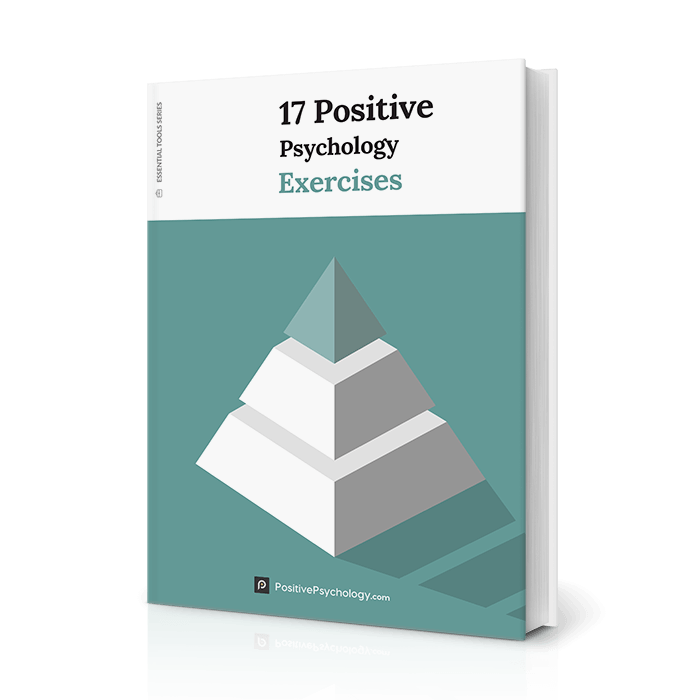



What our readers think
This has helped me a lot can I contact you
Hi Dr. Frimpong,
Feel free to contact us at info@positivepsychology.com for any specific questions or queries.
I hope this helps!
Kind regards,
-Caroline | Community Manager
Hello there,
I would like to develop a coaching program for coaches and train coaches to coach others.
How can I utilize your program to create my program?
Hoping to get some suggestions for you,
Thank you in advance
Hi Arthur,
I’d encourage you to take a look at the Life Navigation series for a complete program you can use to develop a coaching program based on positive psychology. This is the culmination of our best resources for this purpose and includes 40+ hours of video as well as PowerPoint slides, coaching manuals, and handbooks you can use to develop your course. You can learn more here: https://pro.positivepsychology.com/product/the-complete-life-navigation-masterclass-series-full/
Let me know if you have any questions.
– Nicole | Community Manager
Thank you Sir for sharing your article with me it helps me to counsel my clients through online at present,my future goal is to start counseling center with your guidance.
Interesting article but it felt like I was being sold the Quenza software…. I can’t see any disclosure anywhere about whether the author has an interest in Quenza or whether Quenza sponsored the article so I wanted to ask this question specifically please. If the answer is positive, I think it should be disclosed at the top.
Hi Michael,
So sorry about the oversight! Yes, the same innovative team that developed PP.com also built Quenza, with the help of the positive psychology community. Our development of the platform was spurred by feedback from this community that there was a need for a more modern online tool to support therapists and coaches. Please have a look at our team page here to learn more about who’s involved, and to learn more about the specific support we’re hoping to provide practitioners with Quenza, you can take a look at our roadmap for the service here. Our apologies for not making this relationship clearer.
– Nicole | Community Manager
Creo que por ética deben estar los datos resguardados. Es una lastima que estos programas, sus usos y las herramientas no sean tramitadas por la Secretaría como Formación Contínua de Docentes.